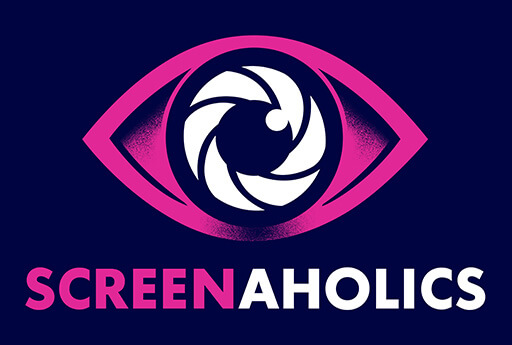You know that feeling when you go to the cinema by yourself? There’s a group in the row behind gossiping mindlessly. You had arranged to meet someone, who cancelled, now you are alone. The empty seats beside you take on a further quality of distance and isolation. The whispering voices of others synchronise with your own subconscious fears. Then the film starts.
You are introduced to a woman protagonist, who for all intents and purposes appears entirely normal. She goes to her day job in a typical routine. In her lunch break she accidentally reveals her anxieties to her mother, about living in a new city and being alienated. The audience soon discovers that Sawyer Valenti, played by Claire Foy, has issues with intimacy. When a pseudo-tinder date turns ugly, we discover the real reason for her relocation was to escape a stalker. After getting a consultation for victims of harassment, Sawyer then confesses to having contemplated suicide, and unwittingly signs documentation committing herself to a psych ward for 24 hours.
The viewer is then thrust terrifyingly into the mental dungeon of doubts and fears – the subconscious taboos of modern society – the perils of the modern mental health system. As you sit alone, in the dark, you begin to ponder – who’s really crazy? Could this happen to me?
This is the crux of director Steven Soderbergh’s latest, and arguably greatest film, Unsane; a psychological horror-drama which explores the concepts of mandatory detention, the tricky morality surrounding the scheduling of patients, and the persecution complex that festers within many institutions. The film has been favourably compared to 70’s era anti-psychiatry movies such as One Flew Over the Cuckoo’s Nest (1975), but feels palpably modern, not least for the fact that Soderbergh famously filmed the entire movie using an iPhone.

Soderbergh is renowned as the director who triggered the independent cinema industry of the 1990’s. His debut film Sex, Lies and Videotape (1989) had widespread influence, which can be seen in the work of many filmmakers, from Tarantino to Kevin Smith. Soderbergh has long utilised hand-held cameras to enhance intimacy in his movies, but the choice to film the entire movie by iPhone was a bold and liberating one, which the director described as being as close to ‘holding a pen’ to a canvas as the film medium could allow.
Unsane has the same budget as Sex, Lies and Videotape, and whilst Soderbergh’s career has had highs and lows since then, isolating critics with films like Kafka (1991) and betraying his more intellectual audience with blockbusters like Ocean’s Eleven (2001) – this feels like a return to form, showing just why this free-thinking filmmaker is lauded as a pioneer of his craft.
The entirely familiar, dull-focus of the iPhone 7 provides an intimate realism for social media generations, to whom this lens has become the aperture through which they see the world. In some sense, it could be a defining moment in the future of cinema. The disorientating realness and focus on the mundane, as compared to heavy framing, blocking, decadent costumes, and utilising of ornate furniture or architecture in the composition of classical cinema makes Unsane true modernist cinema, in the same way T.S. Elliot’s The Waste Land triggered a new wave of stream of consciousness in fiction, this may yet mark a change in the way we view the purpose of cinema.
There are many well orchestrated techniques in the filming process. Soderbergh utilises the phone like a 3D camera, lurking on objects to the effect of an invisible voyeur. We follow as Sawyer’s paranoia increases, when she calls the police but they are unwilling to intervene. Then after a violent confrontation with another patient, Violet, played by Juno Temple, her stay is upgraded to the maximum mandatory period of 7 days. The iPhone is utilised particularly well during a scene when Sawyer is force-fed psychotropic drugs and begins to run around the room in a state of panic, double exposures representing her two sides – the manic and the subdued.

Sawyer puts her trust in another patient, recovering opiate addict Nate Hoffman (Jay Pharoah), but as the climate of fear is accelerated, the characters become more like devices than characters, to represent the breakdown of trust when you are confined with people who society deems mentally unstable. From this angle, the film is just a reprise of the asylum prisoner slash unreliable narrator genre, with precedents like Shutter Island (2010) and Session 9 (2001). The viewer is brought in, and questions the motivations of all characters as the line between doctor and patient, crazy person and sane person, power of authority and victim are all broken down.
Perhaps the premise of Unsane isn’t entirely original; a theme we’ve seen in countless films and stories, with the exploitation of the woman who goes mad in Sawyer’s dialogue resembling Blanch DuBois’ chilling statement ‘I have always relied upon the kindness of strangers’ prior to her incarceration in Tennessee William’s A Streetcar Named Desire (1951), or Gloria Swanson’s “Mr. Demille, I’m ready for my close up” in Billy Wilder’s Sunset Boulevard (1950).
The fears and taboos surrounding mental illness tend to pop up in fiction every decade and the question addressed in the film, over whether it is ethical to contain the mentally ill without their consent is one which does warrant constant attention. Australia is actually quite a forward country in our attitude to this issue, but the issues addressed in this American film are still relevant. Four of our states changed their mental health acts to allow for patients to competently refuse psychiatric treatment, just as they have the right to refuse recommended physical medical treatments. In Tasmania, South Australia, Western Australia and Queensland, psychiatrists can try to persuade patients to have treatment, but can’t force them. This does seem like the ethically superior model to more outdated attitudes, though unfortunately the A.C.T., New South Wales and Victoria still allow some modes of mandatory detention in spite of treatment being competently refused by their patients.
Perhaps the most potent effect of movies like Unsane is that they allow us to subconsciously deal with societal taboos and fears, in an effect cleansing our anxieties. There are often deeply held stigmas and misconceptions that mental illness is something one can ‘catch’, like a cold, merely from coming into contact with the unwell. We all fear that there are private moments, thoughts and feelings we can’t share sometimes, and the feeling that we could be misdiagnosed, as the character Nate Hoffman, a journalist trying to expose the mismanagement of the institution puts it, as column B – people who belong in the asylum, rather than column A – people that don’t belong there.
Which one are you?
(Not So) Fun Fact:
Statistics show that 1 in 5 Australians aged 16-85 experience some form of mental illness in any given year, and half of the population will experience some facet of this in their lifetime. It’s therefore important that the conversation around the subject continues, and we continue to probe its many taboos. In this sense, Unsane is also a great conversation starter. Go and see it!




COMMENTS